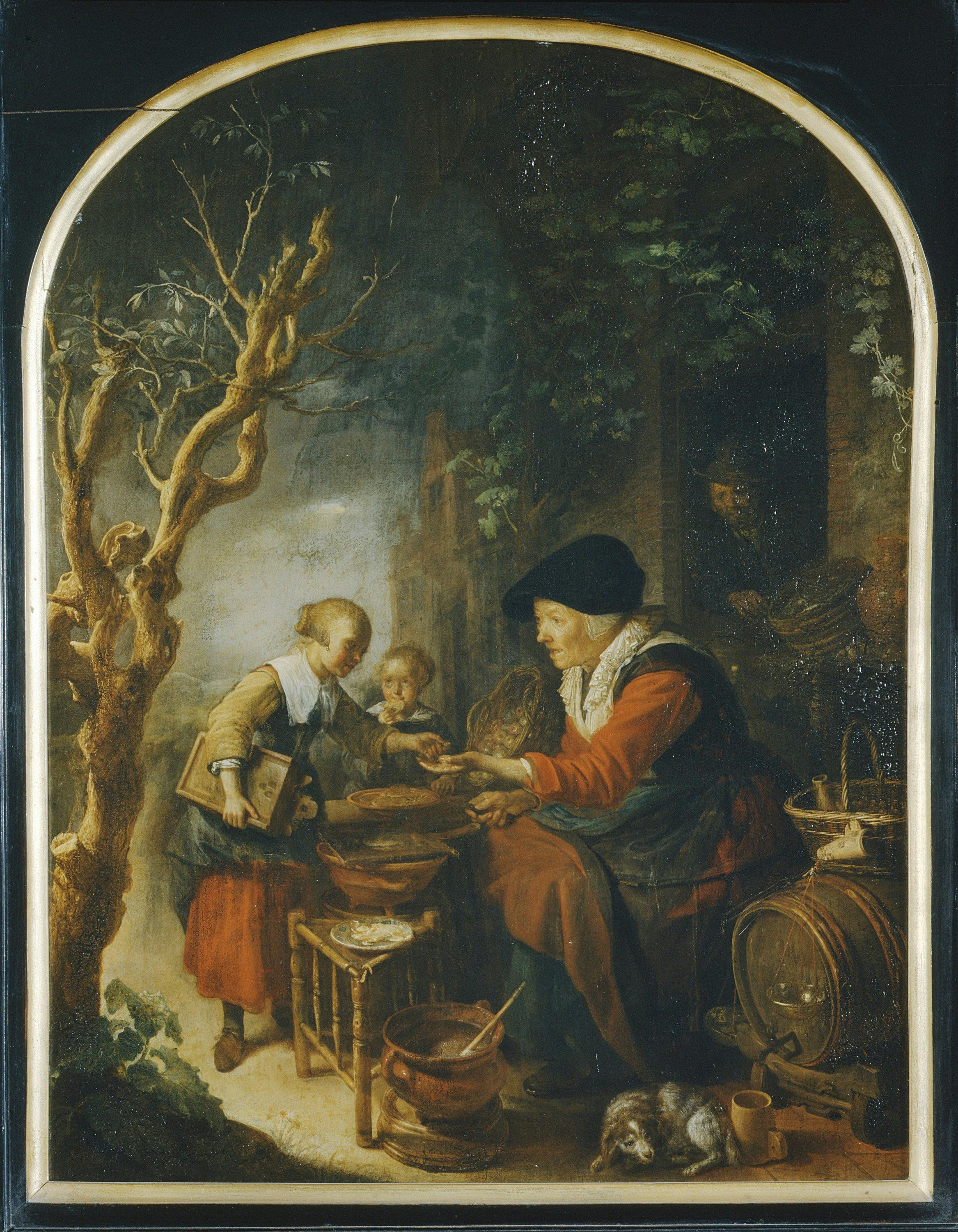Pancake Seller
Gerrit Dou (Leida 1613–1675)
This delightful scene was conceived for a slow, close viewing, in order to fully enjoy the fresh inventiveness of this Dutch painter, a pupil of Rembrandt, who was well known and sought after in his time as a specialist of 'genre' painting, a movement that started in the Netherlands and spread from mid-16th century onwards, and that soon influenced also Italian artists, especially in the areas of Lombardy and Veneto. The term 'genre painting' refers to a particular type of subjects and stories (such as festivals, markets or scenes taking place in the interiors of dwellings) taken from everyday life in the city or in the countryside, depicting middle-class or working-class characters observed from life, without the celebratory intentions and iconographic constraints required by religious, mythological and historical themes. This type of production, which was smaller in size and cost if compared to altarpieces, official portraits or fresco cycles, was affordable to a wider public, and in the 17th century became a vehicle for representing the society of the time, and therefore constitutes an important document to deepen our knowledge of that world.
A village street bordered on the left by a large tree with gnarled trunk is the backdrop against which an old woman appears while busy at her hawker stall. The basket of fruit, the pot filled with soup, the barrel of wine and, above all, the frying pan filled with oil to make the pancakes, are the tools necessary for her work: cooking hot food and pancakes for passers-by. Amongst them, two little girls on their way home from school have not been able to resist her sweets: the eldest is leaning in to hand over some coins, while the youngest is already busy biting into the delicacy she just obtained. Behind the old woman comes a man, carrying a container with more food to display, but this time he looks straight at the spectator, just like the small dog curled up at his mistress's feet in the lower part of the scene. Gerrit Dou pauses with curiosity to describe each object analytically, from the copper pot with its ladle, to the scales, up to the wooden barrel and the wicker basket with a bottle in it. The typical fashionable clothes of the time are examined with the same lucidity: the ruffled collars, the shoes with bows, the hats. The golden light gives the scene a warm autumnal tone, adding to the poignancy of this picture of real life which, in a small fragment, almost a photographic shot, recounts what a traveller might have seen in any Dutch city of that time.
M. Chiarini, Gli Uffizi. Catalogo Generale, Firenze 1979, p. 252; B. W. Meijer, Rembrandt nel Seicento toscano, Firenze 1983, p. 25; Il secolo di Rembrandt. Pittura olandese del Seicento nelle Gallerie fiorentine, catalogo della mostra (Firenze, Palazzo Pitti, 27 giugno – 9 settembre 1978), a cura di M. Chiarini, Firenze 1987, p. 74; I dipinti olandesi del Seicento e del Settecento, a cura di Marco Chiarini, Istituto Poligrafico e Zecca dello Stato, Roma 1989, pp. 108-109
